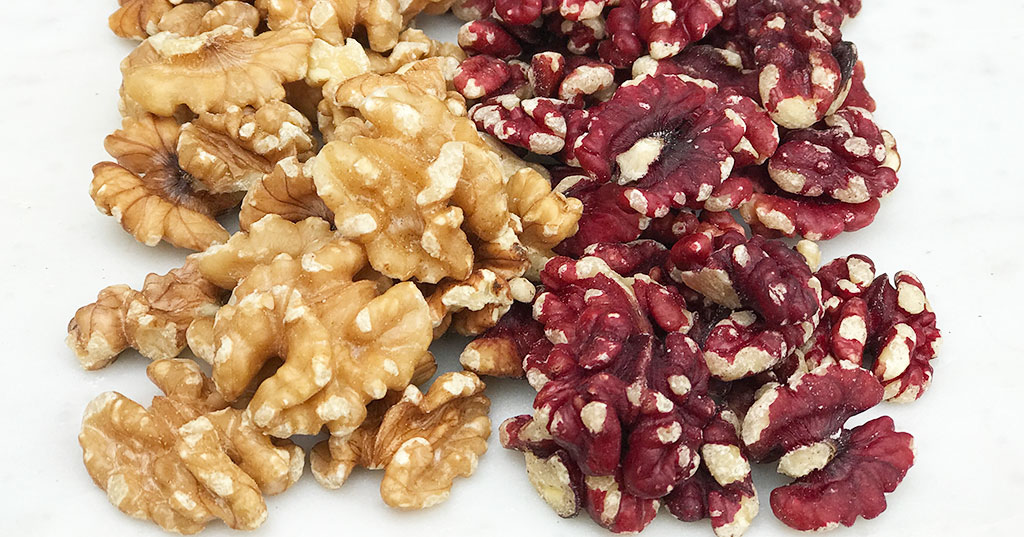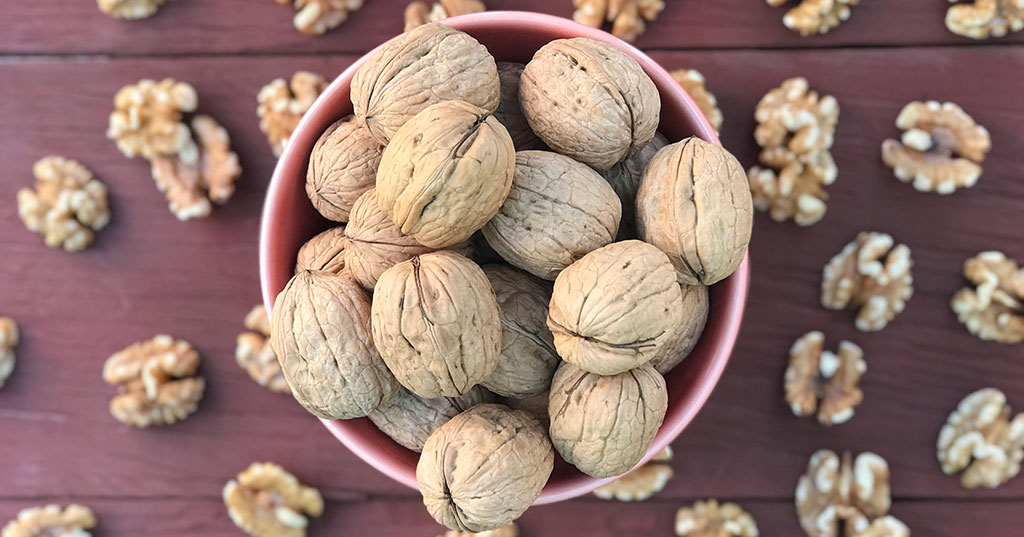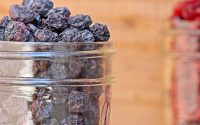Walnuts: Did you know?
California Red and “Brown” Walnuts – A Brief History:
According to UC Davis, San Diego County was the first county in California to plant a walnut orchard and, by the 1940s, acreage had made its way north to the central valley. Today, more than half of California’s walnut acreage is based in San Joaquin, Stanislaus, Butte, Tulare, and Sutter counties (01). This year of 2017, the California Objective Measurement Report has stated there is more walnut tree acreage and more trees per acre than past years, however the average nut set has hit an all time low (02). This means, despite there being more trees, the number of walnuts per tree is lower than ever before. However, the size of the walnuts overall – including the meats – are bigger than any previous year on record as well.
Bella Viva offers walnuts in four different variations, all of which are shelled (no shell). These include our Natural Walnuts, Organic Walnuts, Red Walnuts and our Organic Red Walnuts. According to latimes.com, the red walnut was created at the University of Davis in 1998 and patented in 2001. The official name of the red walnut is the Robert Livermore Walnut (03). Aside from the obvious difference in skin colors, the red walnut is bigger and some believe a bit sweeter than most regular walnuts. The nutrients of the two don’t differ one bit though. You will still be getting just as many benefits as the other no matter which one is your preference. So make certain to take advantage of this fine and fresh super-nut!
Health Facts:
It may be because of the crunchiness and earthiness that makes the walnut a favorite by many. Yet, while you’re savoring the robust taste, you’re also intaking some super good nutrients. Actually, walnuts have been tagged as a superfood and they definitely live up to that title. Bella Viva Walnuts are full of omega-3 and omega-6 fatty acids which are an essential part of everyone’s diet even though the body can’t self-produce them. Multiple studies have come to show that omega-3 fatty acids may help with cardiovascular health and also helps against depression, and that both of these types of fatty acids may act as anti-inflammatory agents too (04) (05).
Maybe if you’ve seen a whole walnut still in the shell, you’ve noticed the hull – or hard shell – looks quite similar to a human skull and the walnut meats look like human brains. This might be a coincidence, but according to The University of Maryland Medical Center, both omega-3 and omega-6 fatty acids play significant parts of brain function too (06). There are countless benefits that your body can experience from intaking the correct balance of the two. A wonderful thing is that walnuts are the perfect source to help your body gain that balance while you get to enjoy the delicious nutty flavor that they deliver.
Fun Facts:
- California produces 99 percent of the United States commercial walnut supply (07)!
- It takes around five gallons of water to produce just one walnut (08)!
- The main walnut harvesting season in the United States lasts for around three months between August and November (09).
- English Walnut trees can live up to 150 years old (10)!
- In Greek, the word for “walnut” is “karyon” meaning “head” (11).
- https://apps1.cdfa.ca.gov/FertilizerResearch/docs/Walnut_Production_CA.pdf
- https://www.nass.usda.gov/Statistics_by_State/California/Publications/Fruits_and_Nuts/2017/
- http://www.latimes.com/food/la-fo-marketnews-online-20121026-story.html
- http://www.umm.edu/health/medical/altmed/supplement/omega6-fatty-acids
- https://www.noorvitamins.com/Health-Blog/omega-3-fatty-acids-facts-and-benefits/
- http://www.umm.edu/health/medical/altmed/supplement/omega6-fatty-acids
- https://www.treehugger.com/green-food/5-nuts-not-primarily-grown-california.html
- http://keepcaliforniafarming.org/california-water-crisis/farming-california-news/how-much-water-to-grow-walnut/
- https://walnuts.org/about-walnuts/how-walnuts-are-grown/
- http://homeguides.sfgate.com/english-walnut-tree-information-41996.html
- http://www.softschools.com/facts/plants/walnut_tree_facts/614/





